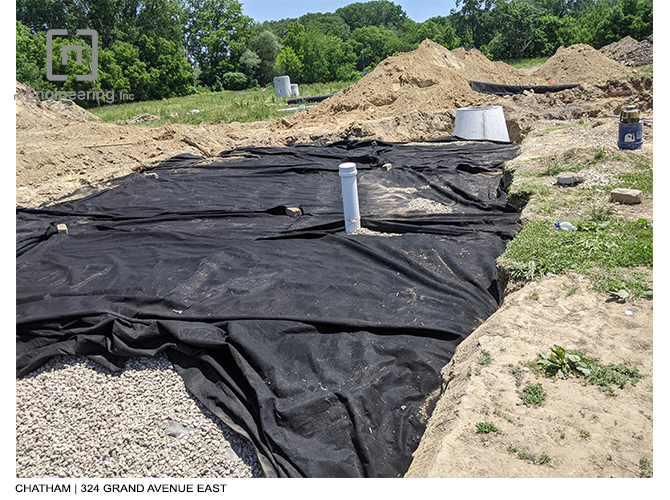Stormwater management plays a crucial role in the development of urban areas, ensuring that natural water systems are protected and that flood risks are mitigated. In Canada, rapid urbanization and increased construction activities have heightened the importance of efficient stormwater management systems. Effective stormwater management is not just about handling rainwater runoff; it’s about creating sustainable solutions that protect both infrastructure and the environment. At n Engineering, we specialize in providing tailored stormwater management Canada solutions that adhere to local regulations and best practices. In this guide, we will explore the significance of stormwater management, key design considerations, and how our team can help you implement the most effective solutions.
The Importance of Stormwater Management Canada
As urban areas continue to expand across Canada, the natural flow of stormwater is often disrupted by impervious surfaces such as roads, parking lots, and buildings. When rainwater falls on these surfaces, it does not have the opportunity to seep into the ground, leading to surface runoff. Without proper management, this excess runoff can cause flooding, erosion, water pollution, and degradation of natural habitats.
Efficient stormwater management solutions are essential for mitigating these risks. They help control water runoff, ensure proper drainage, reduce the risk of water pollution, and support local ecosystems. Additionally, with the increased frequency of extreme weather events due to climate change, effective stormwater management systems have become more critical than ever to protect both urban infrastructure and the environment.

Key Components of a Stormwater Management System
A well-designed stormwater management system typically includes a variety of infrastructure components that work together to manage the flow of rainwater. These components may include:
- Stormwater Inlets and Drainage Systems: These collect and convey stormwater to designated locations for treatment or storage.
- Detention and Retention Basins: These basins are designed to hold rainwater temporarily, allowing it to be released slowly into the environment. Detention basins hold water temporarily, while retention basins store water permanently.
- Permeable Pavements: Permeable materials, such as permeable concrete or asphalt, allow water to infiltrate the ground rather than running off into the stormwater system.
- Green Infrastructure: Solutions such as bioswales, green roofs, and rain gardens help manage stormwater through vegetation, soil, and natural processes.
- Stormwater Ponds and Wetlands: These natural systems provide both stormwater treatment and wildlife habitat.
Sustainable Urban Development through Stormwater Management
The principles of sustainable urban development call for environmentally friendly approaches to urbanization that minimize the impact on ecosystems and natural resources. By integrating stormwater management in Canada practices, cities can reduce the harmful effects of urbanization on water quality and promote ecological balance.
In Canada, sustainable stormwater management Canada solutions are increasingly being incorporated into urban planning and design to achieve green, resilient cities. For instance, using select stormwater management infrastructure, such as permeable pavements, rainwater harvesting systems, and green roofs, can reduce the overall impact of development projects. These solutions help control runoff, enhance water quality, and promote biodiversity within urban environments.
The integration of stormwater management strategies into urban development is a growing trend in Canadian cities. Municipalities are adopting policies and regulations that encourage or require sustainable stormwater management practices, making it a key element of responsible urban growth.
The Role of Stormwater Management Consultants
Implementing an effective stormwater management system requires expertise in engineering, hydrology, and environmental science. At n Engineering, we provide professional services through our team of experienced stormwater management consultants. We work closely with developers, municipalities, and other stakeholders to design and implement stormwater management strategies that meet both regulatory requirements and sustainability goals.
Our consultants help with every phase of the stormwater management process, including:
- Feasibility Studies: Assessing the site’s suitability for various stormwater management techniques based on its hydrological characteristics.
- Design and Planning: Developing detailed plans that include stormwater management design solutions that effectively manage runoff while meeting regulatory requirements.
- Permit Applications: Assisting with the submission of Stormwater Management Reports in Canada and ensuring compliance with local guidelines.
- Monitoring and Maintenance: Providing ongoing support for stormwater systems to ensure they remain effective and operational.
Developing a Stormwater Management Design Solution
Each stormwater management project is unique and requires a customized approach. At n Engineering, we specialize in creating tailored stormwater management design solutions that are responsive to the specific needs of your site. Whether you are working on a residential, commercial, or industrial development, our design solutions are designed to effectively manage runoff, prevent flooding, and protect water quality.
Key steps in developing a stormwater management design solution include:
- Site Assessment: Understanding the topography, soil type, and existing water systems of the site to determine the most effective stormwater management approach.
- Hydrological Modeling: Using advanced software to simulate how rainwater will flow across the site and identify areas at risk for flooding or erosion.
- Selection of Best Management Practices (BMPs): Choosing the right combination of infrastructure, such as retention ponds, green roofs, or permeable pavements, to manage runoff efficiently.
- Compliance with Regulations: Ensuring that the design meets all relevant Canadian regulations and local municipal guidelines.
- Implementation and Maintenance: Providing support during construction and offering ongoing maintenance services to ensure the system remains functional.
The Future of Stormwater Management Canada
As climate change brings about more extreme weather conditions, including heavier rainfall and increased frequency of storms, the demand for resilient stormwater management systems will continue to grow. The future of stormwater management in Canada will likely involve an increased emphasis on green infrastructure and nature-based solutions. Cities across the country are recognizing the value of integrating nature into urban systems to create more resilient and sustainable communities.
Emerging technologies, such as smart stormwater systems and real-time monitoring, will also play a significant role in the future of stormwater management. These technologies will allow for more efficient management of water resources, with the ability to adapt to changing conditions and minimize the impact of stormwater runoff.
Why Choose n Engineering for Your Stormwater Management Needs?
At n Engineering, we understand that every development project is unique, and we offer personalized solutions to meet your specific stormwater management needs. Our expertise in designing and implementing stormwater management systems ensures that your project will not only meet regulatory requirements but also contribute to a more sustainable urban environment.
By choosing n Engineering for your stormwater management needs, you will benefit from:
- Expert Knowledge: Our team of consultants has extensive experience in providing effective stormwater management solutions across Canada.
- Customized Solutions: We work closely with clients to develop stormwater management systems that are tailored to the specific needs of their projects.
- Comprehensive Services: From initial assessments and designs to ongoing maintenance, we offer end-to-end stormwater management services.
- Sustainability Focus: We prioritize environmentally friendly and sustainable solutions to ensure long-term benefits for both the development and the surrounding ecosystem.

Conclusion
Stormwater management is a critical component of sustainable urban development in Canada. As cities continue to grow, the need for effective stormwater management systems becomes increasingly important. By implementing innovative solutions and working with experienced stormwater management consultants like n Engineering, developers can ensure that their projects are sustainable, resilient, and compliant with local regulations.
Whether you need stormwater management Canada, a comprehensive stormwater management design solution, or advice on select stormwater management infrastructure, n Engineering is here to help. Contact us today to learn how we can assist with your stormwater management needs and contribute to the creation of greener, more sustainable urban environments across Canada.

